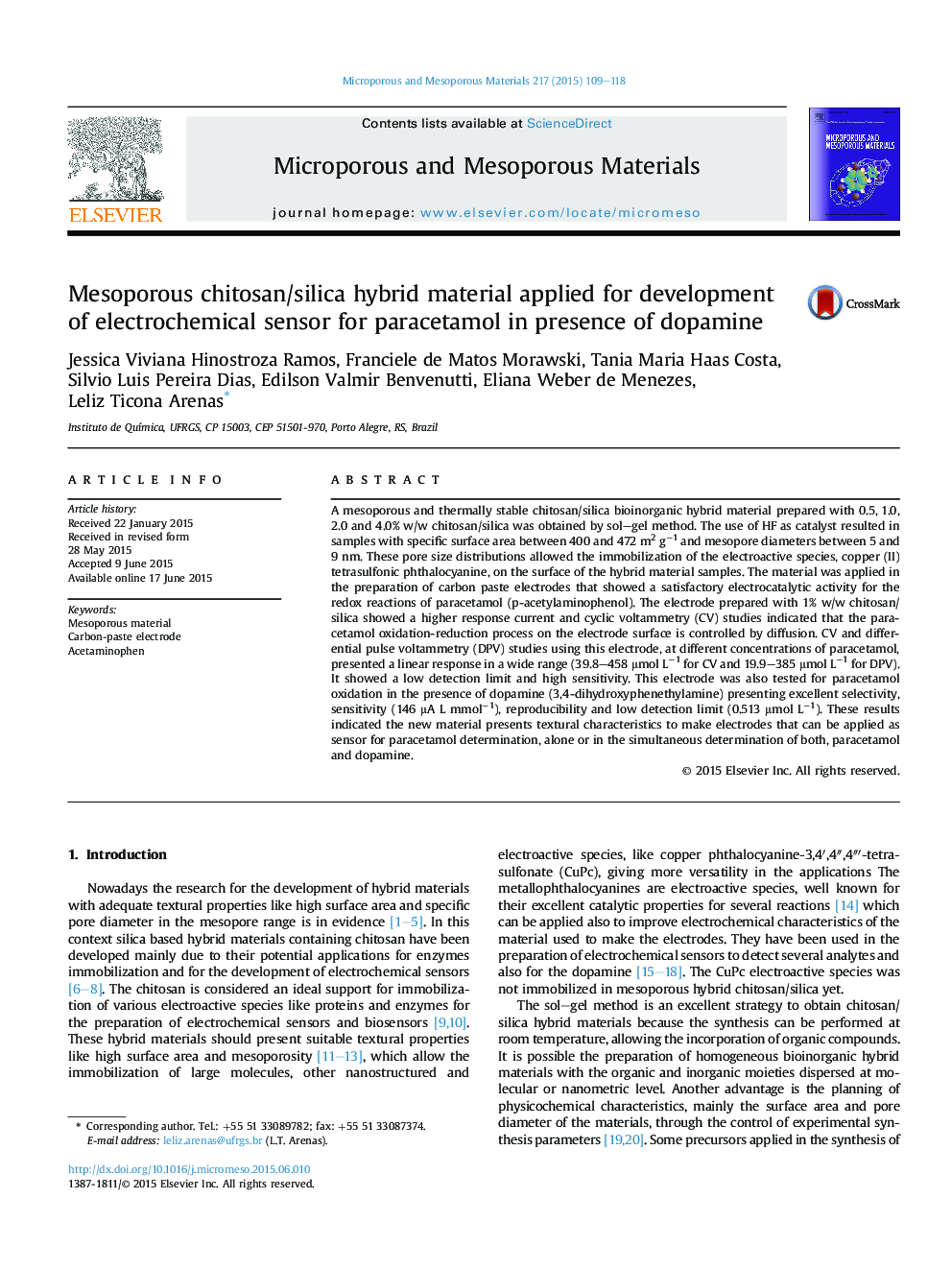| کد مقاله | کد نشریه | سال انتشار | مقاله انگلیسی | نسخه تمام متن |
|---|---|---|---|---|
| 72355 | 49018 | 2015 | 10 صفحه PDF | دانلود رایگان |
• Mesoporous silica/chitosan hybrid material.
• Thermally stable silica chitosan hybrid material.
• Copper (II) tetrasulfonic phthalocyanine immobilized in silica chitosan.
• Copper (II) tetrasulfonic phthalocyanine as electroactive species.
• Electrochemical sensor for paracetamol determination in presence of dopamine.
A mesoporous and thermally stable chitosan/silica bioinorganic hybrid material prepared with 0.5, 1.0, 2.0 and 4.0% w/w chitosan/silica was obtained by sol–gel method. The use of HF as catalyst resulted in samples with specific surface area between 400 and 472 m2 g−1 and mesopore diameters between 5 and 9 nm. These pore size distributions allowed the immobilization of the electroactive species, copper (II) tetrasulfonic phthalocyanine, on the surface of the hybrid material samples. The material was applied in the preparation of carbon paste electrodes that showed a satisfactory electrocatalytic activity for the redox reactions of paracetamol (p-acetylaminophenol). The electrode prepared with 1% w/w chitosan/silica showed a higher response current and cyclic voltammetry (CV) studies indicated that the paracetamol oxidation-reduction process on the electrode surface is controlled by diffusion. CV and differential pulse voltammetry (DPV) studies using this electrode, at different concentrations of paracetamol, presented a linear response in a wide range (39.8–458 μmol L−1 for CV and 19.9–385 μmol L−1 for DPV). It showed a low detection limit and high sensitivity. This electrode was also tested for paracetamol oxidation in the presence of dopamine (3,4-dihydroxyphenethylamine) presenting excellent selectivity, sensitivity (146 μA L mmol−1), reproducibility and low detection limit (0.513 μmol L−1). These results indicated the new material presents textural characteristics to make electrodes that can be applied as sensor for paracetamol determination, alone or in the simultaneous determination of both, paracetamol and dopamine.
Figure optionsDownload as PowerPoint slide
Journal: Microporous and Mesoporous Materials - Volume 217, 15 November 2015, Pages 109–118
